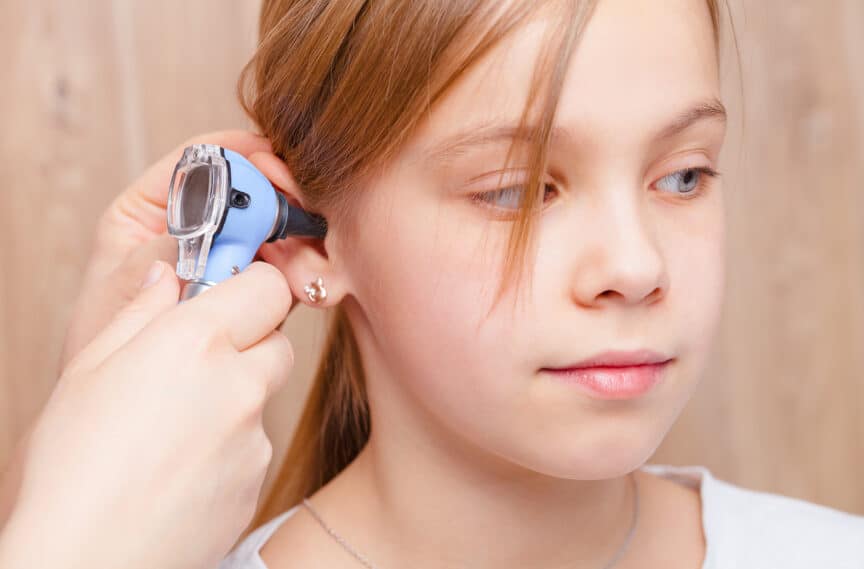Though hearing loss is often associated with aging or loud noise exposure, there are several other factors that can lead to its development. You may be surprised to learn that ear infections can also cause hearing loss. Specifically, ear infections can cause conductive hearing loss, a type of hearing loss that occurs in the middle ear. Fortunately, this type of impaired hearing is usually treatable with solutions that restore hearing.
Conductive Hearing Loss
There are three types of hearing loss: sensorineural, conductive, and mixed hearing loss. Sensorineural hearing loss, which is the most common type, occurs in the inner ear. It can be caused by a range of factors including aging, exposure to loud noise, and medical conditions. These factors damage the hair cells in the inner ear which play a critical role in how we absorb and process sound. Sensory cells in the inner ear send auditory information to the brain which further analyzes these signals and assigns meaning to them, allowing us to understand what we hear. Damage to these hair cells prevents them from carrying out this essential function, producing hearing loss. Unlike other types of cells we have, hair cells in the inner ear do not regenerate and there are no medical treatments that can correct damage which means that the hearing loss that is produced is permanent.
Conductive hearing loss differs in a few key ways. It occurs in the outer or middle ear and is caused by obstructions. This includes a buildup of earwax, growths, a perforated eardrum, injury from foreign objects, and ear infections. These obstructions prevent soundwaves from being fully absorbed and traveling through the ear canal to reach the inner ear. Unlike sensorineural hearing loss, conductive hearing loss results in hearing gloss that is temporary.
Ear Infections & Hearing Loss
Ear infections are caused by bacterial or viral infections that infect the air-filled space behind the eardrum. This results from blockages in the eustractiona tubes. These tubes connect the middle ear to the back of the throat and help drain fluid from the middle ear as well as equalize pressure. When the eustachian tubes become swollen, this causes fluid to accumulate in the middle ear which can become infected and this causes an ear infection. This can be caused by numerous factors including: allergies, changes in air pressure, cold, sinus infections, common cold etc.
Ear infections and the buildup of fluid that happens makes it challenging for the eardrum and ossicles to propel soundwaves further into the ear. These components are integral to how sound is absorbed and processed. Sound Waves are absorbed and travel through the ear canal before landing on the eardrum. Movement of the eardrum then activates the ossicles – three tiny connected bones – which help propel soundwaves further into the ear. Inflammation of the eustachian tubes and the fluid that accumulates prevents the eardrum and ossicles from helping with the movement of soundwaves, leading to conductive hearing loss.
Treating Ear Infections
There are a variety of ways that ear infections are treated, depending on the type and severity of infection. It is common for ear infections to improve within a few days using self-managed treatment strategies including:
- Over the counter medications which alleviate symptoms. This includes ibuprofen which alleviates pain and headaches as well as ear drops or decongestants to reduce pressure.
- Using a warm cloth to cover the ear which can also alleviate discomfort and pain.
These strategies focus on alleviating the symptoms produced by ear infections. But for symptoms that are more severe, a healthcare provider may provide antibiotics which clears the infection. For people who experience ear infections chronically, minor surgical options may be recommended. Surgical options include placing ear tubes in the eardrum to allow fluid to drain or creating a small incision in the eardrum which is another way of enabling fluid to drain.
These treatment options effectively clear ear infections. This alleviates inflammation, fluid accumulation, and other symptoms of the infection. Treatment also restores hearing abilities, which means that people regain their complete hearing.
Contact us today to learn more about the link between ear infections and hearing loss as well as treatment solutions that can best support your hearing health.

